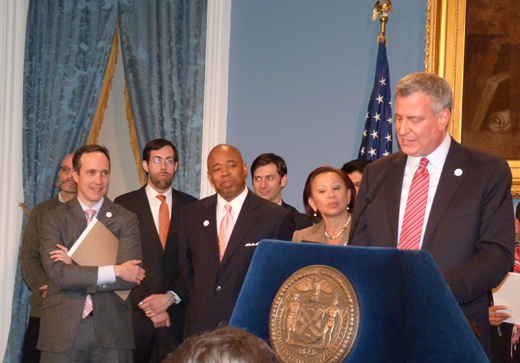Details of the SUNY – LICH hospital deal, unveiled in Brooklyn on Friday

b_LICH_RFP_byMFrost_deBlasio_officials_Walden.jpg
After a year of protests and litigation, details of a settlement opening the way for a new operator for Long Island College Hospital (LICH) were revealed in state Supreme Court in Brooklyn on Friday.
While the agreement does not guarantee that LICH will continue to operate as a hospital, its structure insures that bidders proposing a hospital will jump to the top of the pack in a new RFP (Request for Proposals) process. The RFP could be issued as early as Thursday, lawyers said, assuming approval comes Monday.
(Details of the settlement follow this story.)
